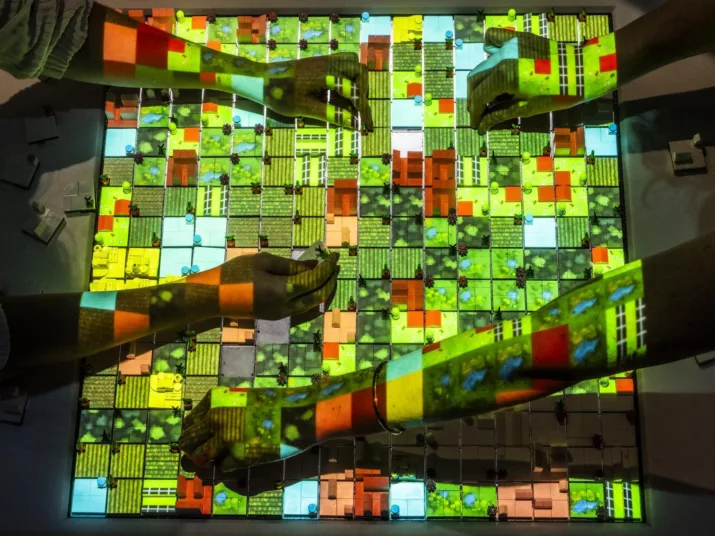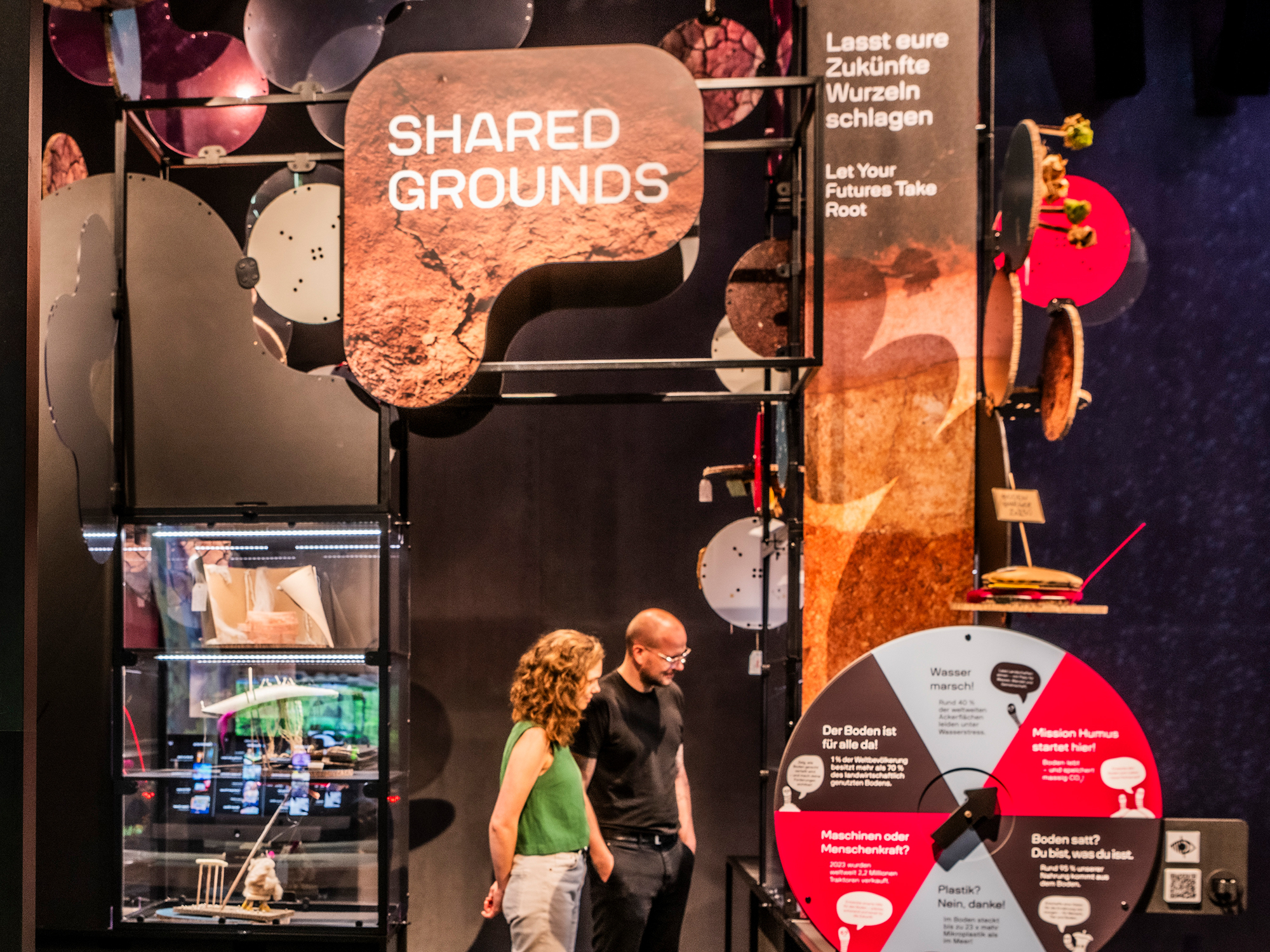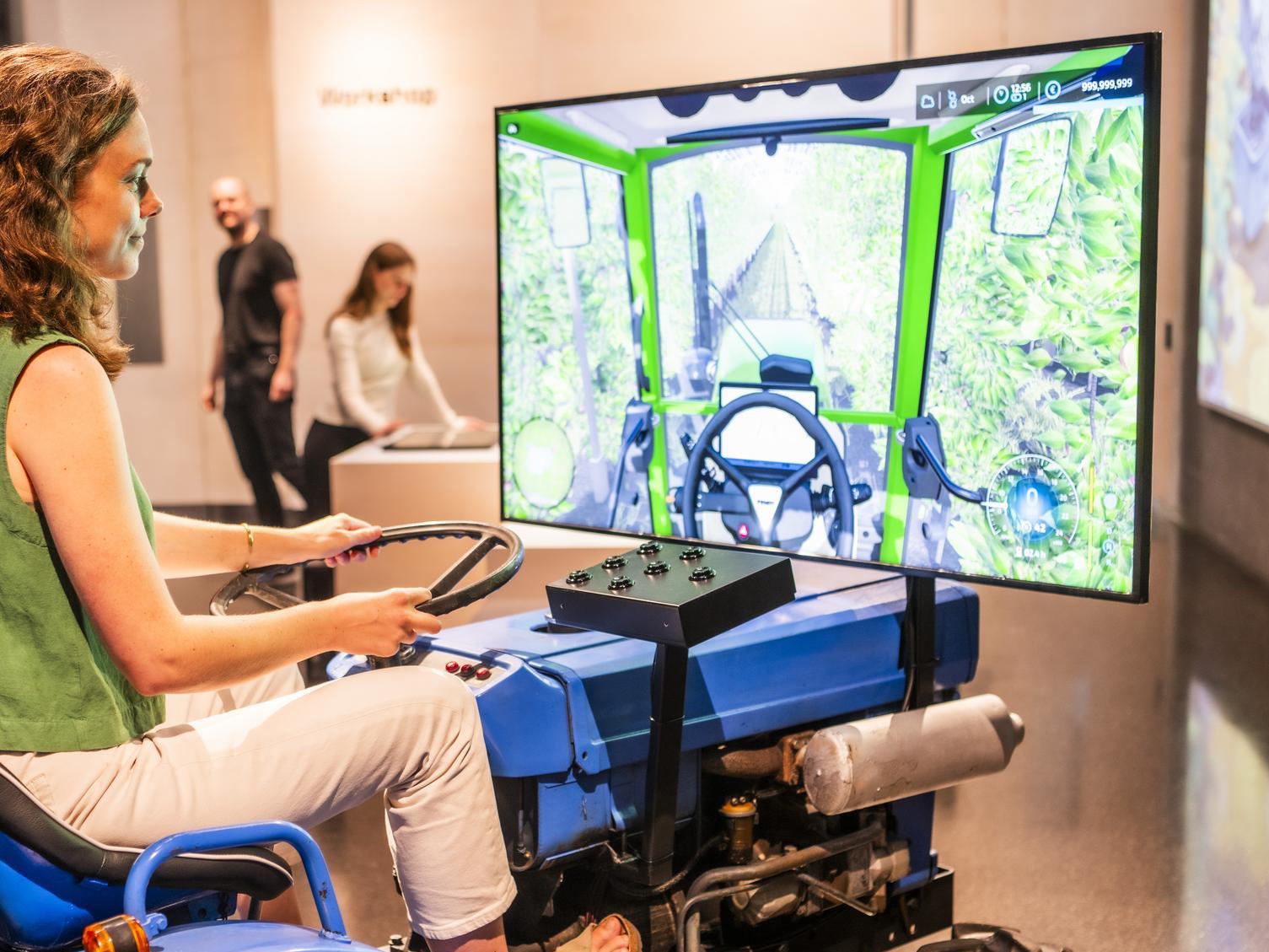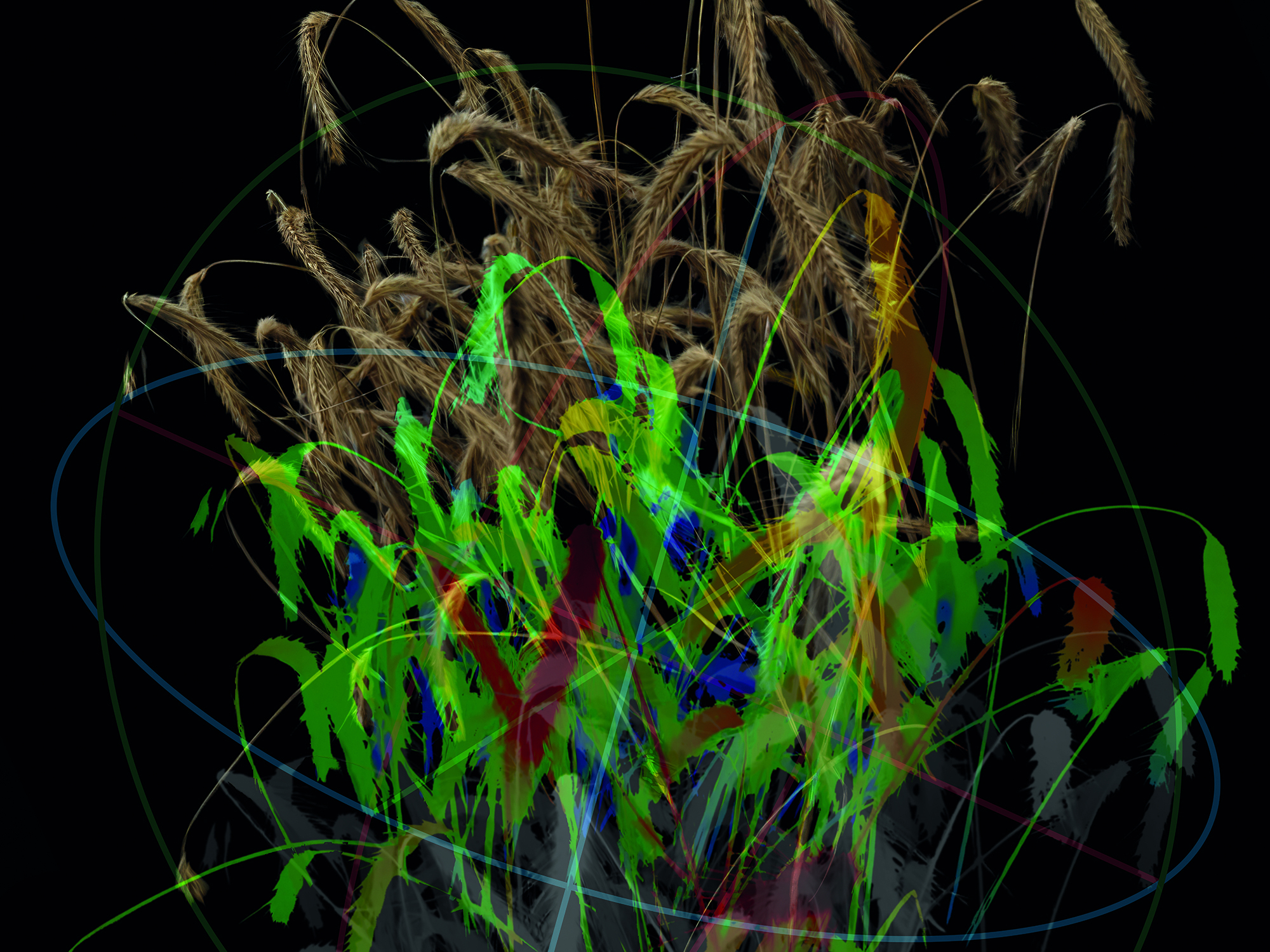
Exploring and Shaping Land Use
Future Landscape Simulator
What is a piece of land – merely a surface, a resource, or a living environment? In the „Future Landscape Simulator” land becomes a space for decision-making: What should take priority – food production or biodiversity? Urban development or renaturalisation? Should we focus on the needs of today or those of tomorrow?
Photo: Jan Windszus
Land is a resource under growing pressure. Agriculture, transport, energy production, housing, recreation, and nature conservation often compete for the same space. At the same time, overuse, climate change, and soil erosion are worsening the situation worldwide. The simulator translates these global challenges into tangible scenarios: What happens when cities continue to expand rapidly? What if we increase reforestation? What are the effects if intensive farming carries on, or if it shifts to new practices?
You become creators: Using building blocks, you design landscapes: fields, forests, wetlands, settlements, solar farms. The physical structures you build are brought to life through a digital projection. In real time, the effects of land-use decisions become visible: CO₂ is absorbed or released, species disappear or return, harvests rise or fall.
Behind the scenes, a mathematical model – similar to those used in environmental planning – runs the simulation. Based on real-world data, it allows the simulation of various land-use scenarios. The simulator visualises how ecological, social, and economic interests are deeply intertwined - and how quickly small interventions can have major impacts.
Three guiding principles shape the simulator's logic: Avoid – Shift – Improve. These represent a shift in mindset: avoid harmful interventions, shift to more sustainable alternatives, improve existing systems. The exact implementation remains open-ended, as the core question is how different objectives can be considered together.
The “Future Landscape Simulator” doesn’t provide definite answers. But it highlights how complex, changeable, and at the same time transformable land-use can be. What you take away may be a deeper awareness of interconnections, a new perspective on seemingly self-evident things, or a question that lingers long after the visit.
“We build tools that get people to ask questions. It’s less about giving answers, than sparking curiosity. Because a good question can stay with you for a very long time,
The “Future Landscape Simulator” was developed by IMAGINARY, inspired by the CityScope platform from MIT Media Lab. The exhibit combines precise data with open access. It is neither a simulation game nor a forecasting tool – but an invitation to explore interconnections and personally experience the potential consequences of our choices.
The “Landscape Simulator” is part of the Future Fields area of the Futurium Lab and is an iteration of the “Future Mobility Simulator”.


